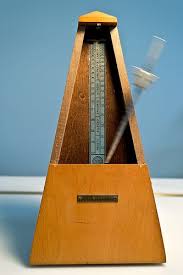
Mar 2, 2021
Some pursuits just don’t work out as intended. The question is what to do next.
I think about Thomas Edison who is said to have had 5,000 – 10,000 failures on the way to improving the light bulb. Before him a light bulb lasted for only several hours. He eventually found a way to make it last a 100 times longer. I can imagine him saying to himself after many of his failures – “Well, okay. Then let’s try this.”
Here’s a recent example of what I tried but didn’t work. I’d been working on a project to expand my network of potential business partners using LinkedIn. I used LinkedIn’s search capability to discover some possible candidates for my network. I reached out to them. But almost everyone ignored my invitations and didn’t connect. I tried again. Same result.
I had two questions to answer. Was the project still worth pursuing? My answer was yes. The follow up question was whether to pivot and find a different approach to achieve the same networking objective or to try to improve the approach I had tried but hadn’t worked. I chose the latter, at least to start with.
I contacted some colleagues who are more proficient with LinkedIn than I am – to get their advice. We reviewed the message that I had been sending out. They said that my invitation to connect was too impersonal and pushy. Why not try a friendlier approach? I changed the message. It worked.
I mention this story to illustrate how important our attitude can be when confronting a challenge. I’ve been noticing lately how frequently things don’t turn out. If so, I pause and think of my action as an experiment that just didn’t work out as intended. So, like Edison, I can say, “Let’s try this again, but in a different way.”
What are some of your recent activities or projects that didn’t work out as you planned? If you think of them as experiments, how does that affect how you feel and what you do?

Feb 23, 2021
My cello teacher Jacqueline Ultan has been telling me recently how important it is to use my metronome when preparing to play music with other musicians. Playing music together means that everyone must play at the same regular pace. The metronome shows me how I’m doing.
When I am playing my cello and seeing the next note on the page, I don’t have time to think about all the mechanics of playing it. For the note to sound right, I must have the correct fingering with my left hand as well as the correct bowing with my right arm. Learning to play a musical instrument means building my muscle memory.
Being concerned about the regularity of playing the notes is another component of playing that I should be concerned about. But the tick/tock of the metronome has driven me crazy in the past. It’s been distracting and has raised my anxiety. My playing has broken down entirely when I’ve used it. My fingering and shifting my positions on the keyboard have fallen apart. In the past, I’ve avoided it whenever possible.
Jacqueline has been telling me that my metronome should be my friend. She has “sweet-talked” me into using it now. I’m coming to understand that my metronome is no more nor less than a measuring tool. It holds me accountable for my pace. It gives me feedback. It shows me what I need to work on.
In some ways a metronome works like a scale that measures weight. If my weight were a concern but I didn’t measure it, then how would I know how I’m doing? If I want to change, I can choose to ignore my measuring tool, but I do so at my own risk. Measuring and change are linked.
What is important enough for you to measure? Do you have a goal you’re trying to reach? How are you measuring progress towards your goal? Who can help/support you and hold you accountable for this?

Feb 16, 2021
For decades in my work as a financial planner, the word “portfolio” meant only one thing – a structured collection of investments. Sometimes called diversification or a balanced investment approach, portfolios have two main features. They help to manage risk – not having all of your eggs in one basket. The variety of investments permits you to take advantage of a wide range of opportunities.
As I’ve described this approach to clients, I’ve warned them to be careful that the components of their portfolio need to be truly different from each other. A lunch comprised solely of four scoops of different flavors of ice cream may be tasty, but it’s not really balanced.
Now that I am a retirement coach, portfolios have a different meaning. Just like in the investment area, portfolios are structured collections but now they contain activities. The advantages are similar. Each component of an activity portfolio can provide both balance in life and opportunities to fulfill a wide range of personal goals.
Executive transition coach George Dow coaches corporate executives as they transition to another job/career or to retirement. He recommends a portfolio approach that includes several categories of activities:
- Learning and self-development. For me this has come from a combination of my work and meeting new people over Zoom.
- Working in the form you want. My retirement coaching is my major focus in this category.
- Giving back. I have some serious volunteer activities that I participate in.
- Healthy living. I eat healthy foods and keep my weight and diabetes under control. I bicycle indoors or outdoors almost daily and do stretching/balancing/weights a couple of times each week. And I sleep more now that I have more time to do that. All of these give me the energy I need to pursue other activities.
- Enjoying personal pursuits and leisure. My most serious leisure activity is my music. I travel when I can, watch cultural events, and get together with family and friends.
I am always juggling – choosing how much time to spend in each category. I find that some of my activities fall into more than one category. For example, my work includes much learning, enjoyment, and I see it as a way of giving back.
I constructed my portfolio of activities only after I had thought about my own values and goals. This portfolio continues to evolve as I proceed down my own unique path.
How can you construct your own effective and efficient portfolio of activities?

Feb 9, 2021
I want to lead an intentional life. I want to decide what I want to do and then do it. It doesn’t always happen. Sometimes, I am just too ambitious and expect to do way more than is reasonable. Other times I get distracted.
Being a “learner” usually works out well for me, but I can get in my own way. My interests and curiosity are frequently piqued. I find that there are two categories of information out there, what my teacher Danny Iny describes as “just in case” and “just in time.”
“Just in case” learning is a mix of general knowledge and entertainment. I do it through newspapers, magazines, and particularly emails. Many emails I receive project an urgency to act right now to take advantage of an offer. I read the material, in part, because who knows when I might need it in the future.
Many times, “just in case” learning is fine. It satisfies my curiosity. But there are two downsides to it. Unless I am careful to schedule my time, random learning can be very disruptive when I need or want to be productive. It can have a reactive feeling to it. Second, I gradually forget this interesting information unless I have an amazing storage and retrieval system for it.
The other type of learning, “just in time,” is quite different. It means going out and getting information that I need when I need it. It is proactive because I initiate that action. This learning type can be short-term, like looking something up on Google, or part of a long-term project, like going to college with a specific career focus.
In his 1989 book The 7 Habits of Highly Effective People Stephen Covey talks about evaluating tasks by their urgency and importance. The biggest mistake people make is to choose urgent but unimportant tasks to work on, instead of the nonurgent but important ones.
Like most people I know, I receive a growing number of emails every day. I find myself spending more and more time each day pursuing information that I never knew I needed – and probably don’t.
I wake up in the morning eager to pursue and complete the tasks that I’ve carefully chosen for myself. But just let me check my email first to see if anything important needs my attention. I often find something that catches my attention, and down a rabbit hole I go.

Feb 2, 2021
If you’ve decided to work on a really, really important goal, how do you respond to it?
Consider the story of Winston Lord, the Ambassador to China and speech writer for Henry Kissinger and Richard Nixon. Kissinger asked him to write an important speech about China, Viet Nam, and Russia. Lord wrote a draft and submitted it to Kissinger.
The next morning Kissinger responded with a note on the speech that read, “Is this the best you can do?” Lord responded that maybe he could improve it and agreed to write another version. He did, only to get the same response, “Is this the best you can do?” This went on for eight versions of the speech – revision, then rejection.
When Lord received the same reaction on his ninth version, he flew into a rage. Yes, it was his best version. He couldn’t change even a single word to make it better. Kissinger looked at him and replied, nonchalantly, “Well okay, then, I guess I’ll read it.”
Kissinger knew that the stakes were high, and he expected the very best from his co-workers. He might have been more supportive, but he did get the high-quality work he needed.
When you have a meeting or an assignment that is very important to you or someone else, how much preparation do you invest in it?

Jan 26, 2021
Is your glass half-full or half-empty? Does your answer depend on your circumstances?
It was only when I read Heidi Grant Halvorson’s 2010 book Succeed: How We Can Reach Our Goals that I came to understand some of the advantages that pessimists have in reaching their goals. Dr. Halvorson, a professor and researcher at Columbia University, is an expert in Social Psychology. In this book she reports the results of experiments, her own and those of others.
Full disclosure: I have always defined myself as an optimist, not a pessimist. I am eager to try new things, and I pursue them with a passion. I also wake up early in the morning eager to start the next day. My wife calls me a “sometimes obnoxious optimist” because of my (overly) hopeful and energetic disposition.
Pessimists’ fundamental belief is that the world is full of danger. Therefore, a pessimist will have goals to prevent bad things from happening. Here are some positive features of pessimism that Dr. Halvorson reports:
- Fear of loss motivates pessimists to work to lessen danger. When their efforts succeed, they are relieved, calm and relaxed.
- Pessimists are cautious, because they want to avoid mistakes. They aren’t procrastinators, they don’t let things slip through the cracks. They will plan and work to avoid the worst outcomes.
- Pessimists are detail-oriented and value accuracy over speed. They are focused and perform better than optimists when there are distractions and temptations.
Clearly, there are times and situations when optimism will work better and others when pessimism is more appropriate. In particular, when there is real and severe danger, then the pessimistic approach will work better. Our challenge then is to determine which approach is more appropriate in each situation we find ourselves in.
Do you see yourself as an optimist, a pessimist, or some of both?






